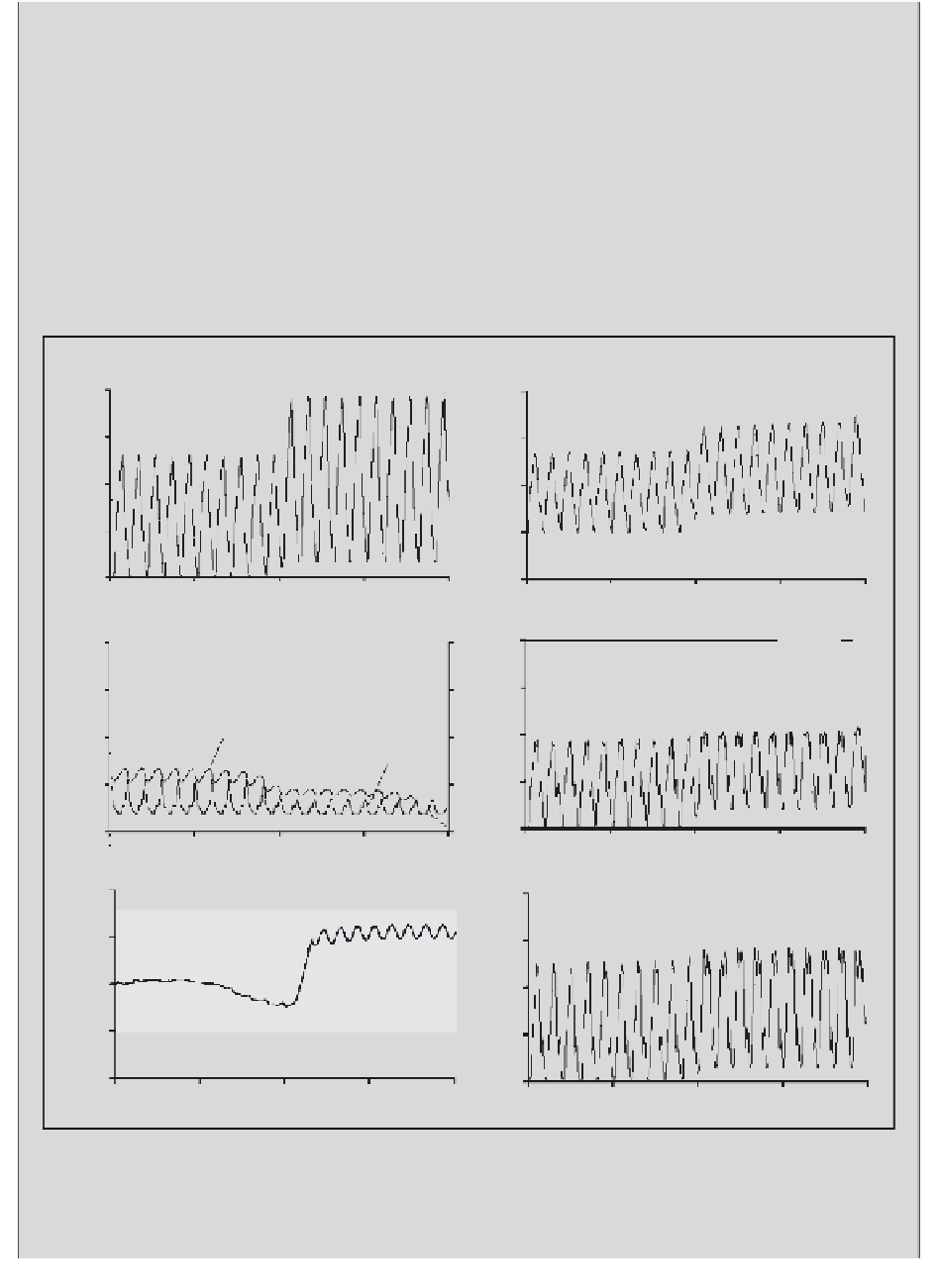Geoscience Reference
In-Depth Information
Case study 4.2 Impact of global change on lake characteristics: Lake Batorino, Belarus
The presuppositions for this 'global change' scenario have been given by Håkanson et al. (2003).
Wick (2000) has discussed how global temperature changes can influence vegetation and sediment
records. The basic assumption is that global warming would increase the mean annual temperature
(as given by the curve in Case Fig. 4.2a). Note that this is a simulation of a hypothetical sudden
increase in temperature and that, realistically, global warming will lead to more gradual changes.
In this scenario, the focus is on the final results rather than the path to the final results. Also note
that global temperature changes may cause more extreme seasonal temperature variations. In this
scenario, the mean annual temperature is raised by 2°C and an increased seasonal temperature
variation has been assumed by applying an exponent
>
1 for the weekly epilimnetic temperatures
'Global change'; Lake Batorino, Belarus
(
°
C)
(
µ
g L
−
1
)
30
140
(a)
(b)
Driving variable
15
70
0
0
1
1
261
521
Weeks
781
1041
261
521
Weeks
781
1041
(mm
3
L
−
1
)
(%)
30
(m)
10
Alarm limit
4
(c)
(d)
Macrophyte cover
Critical limit
5
27
2
Secchi depth
0
0
24
1
261
521
Weeks
781
1041
1
261
521
Weeks
781
1041
(kg ww)
(kg ww)
100,000
(e)
300,000
(f)
50,000
150,000
0
0
1
261
521
Weeks
781
1041
1
261
521
Weeks
781
1041
Case Fig. 4.2
Case study of the effects of global temperature changes on Lake Batorino, Belarus, assuming that there would be
a hypothetical change in lake water temperatures (a). How would this influence fundamental lake characteristics, such as lake
concentrations of phosphorus (b), macrophyte cover and water clarity (Secchi depth) (c), algal volume in relation to operational
'critical' and 'alarm' guideline values (d), biomass of predatory fish (e) and biomass of bacterioplankton (f)?



